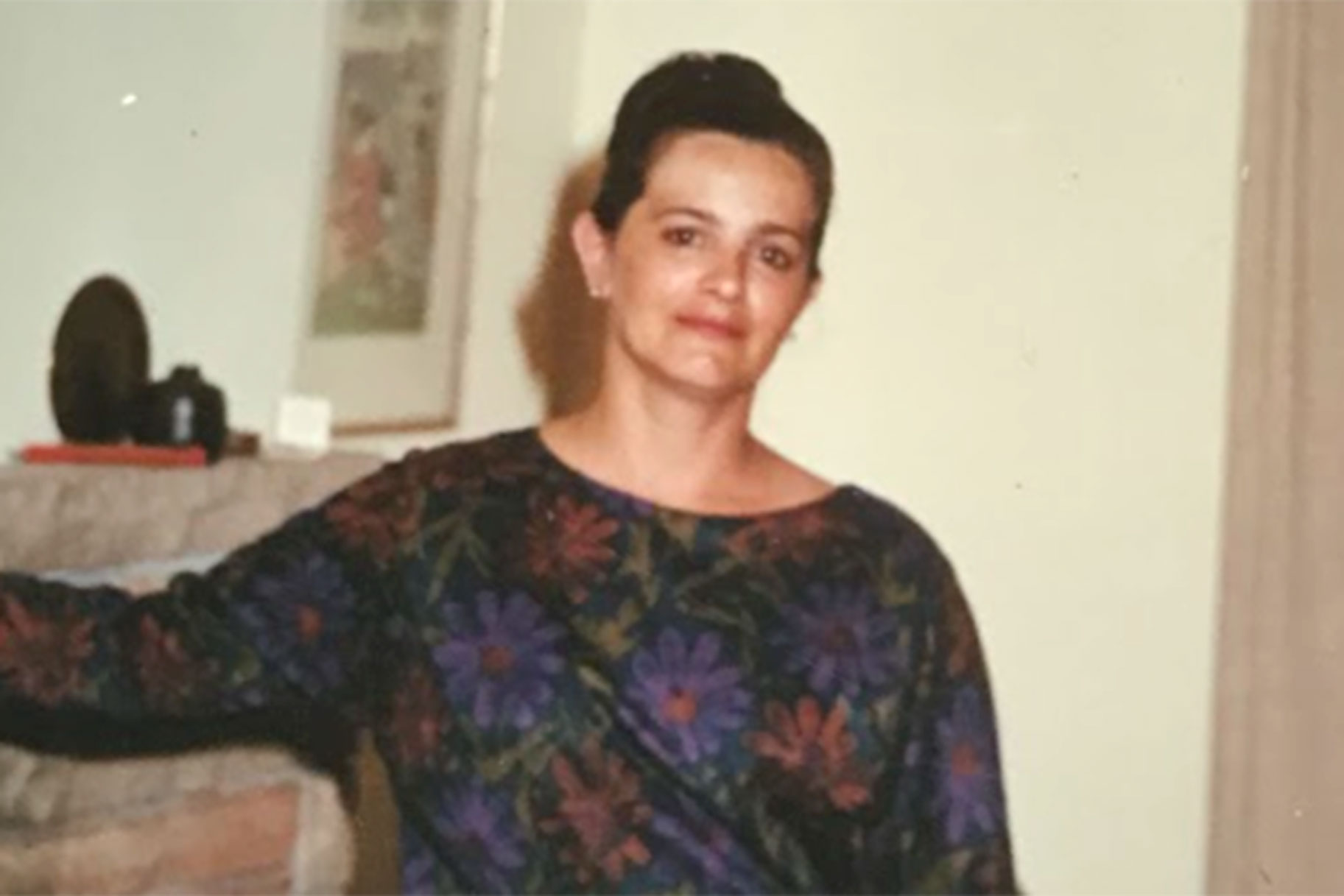Create a free profile to get unlimited access to exclusive videos, breaking news, sweepstakes, and more!
'Well, She Didn’t Shoot Herself’: 30 Years After His Wife’s Death, Colorado Man Finally Confesses
In 1973, Nina Anderson’s shooting death was ruled an accident. Her daughter’s campaign for justice helped prove otherwise.

In the winter of 1973, a 911 call went out to the Larimer County Sheriff’s Department in Colorado.
Charles “Chuck” Anderson had used a neighbor’s phone to report that his wife, Carmina, known to all as Nina, had been shot and was “hurt real bad.”
Officers arrived at the Andersons’ remote trailer and found that Charles had been shot in the hand. Nina’s bullet wound was to her head. Charles claimed he’d been looking at a gun Nina was holding and it accidentally fired. Nina got startled, he said, and the gun accidentally fired again. Her injury was fatal.
Investigators learned that Nina, who had two young daughters, married Charles just 10 days before the shooting, according to “Accident, Suicide or Murder,” airing Saturdays at 7/6c on Oxygen.
As authorities worked the case, they recovered the gun. Officials interviewed Charles, asking him if he had argued with his wife. He claimed that there’d been no dispute.
Patrons at the bar where the couple had gone before the incident contradicted that claim. One stated that Charles said that he was “always fighting” with her. Lisa Cappeli Coppel, Nina’s daughter, told producers she recalled hearing her mom and Charles argue before the gunshots.
Detectives turned to physical evidence, which raised more questions than answers. A gun residue test on Nina’s hand proved inconclusive. That raised suspicion because Charles had said Nina had fired the gun.
According to Robert Seaman, a retired investigator with the Larimer County Sheriff’s Dept., Charles’s version of the events kept changing. Initially he said he hadn’t handled the gun, then he said that he had. Gunshot residue was conclusively found on Charles.
Charles’s inconsistency raised red flags. Investigators suspected that he altered his story to match the evidence as it emerged. Charles was placed under arrest “for the investigation of a homicide,” Seaman told “Accident, Suicide or Murder.”
A follow-up autopsy on Nina concluded that Nina’s fatal wound to her head could not have occurred the way Charles said it did.
The Larimer County District Attorney felt there wasn’t enough evidence to proceed with the case, and suggested a coroner’s inquest to definitively determine the cause of death. From that inquest, Nina’s death was ruled an accident.
The case was closed, and it would stay that way unless the DA could be convinced there was a reason to reopen it. So, in the early 1990s, Lisa, who doubted that her mother died accidentally, reached out to the Larimer County Sheriff’s Dept. for a police report of the 1973 incident.
Lisa was struck by claims that her mother, who was comfortable with firearms, was spooked by a gun. She was also taken aback by Charles’s ever-changing stories. She managed to get authorities to take another look at how her mother died.
The efforts led the coroner to change the cause of death on Nina’s death certificate from accident to inconclusive. The case was reopened 21 year’s after Nina’s death.
There were immediate roadblocks. Because the death had been ruled an accident, original evidence and materials had been destroyed. The coroner’s inquest was nowhere to be found. In 1996, investigators once again had to close the case.
About five years later, a newspaper story that erroneously referred to Nina’s death as a suicide turned out to be an unexpected break. Lisa’s demand for a retraction led a reporter to do an in-depth dive into Nina’s death.
While interviewing Charles, the reporter asked him how Nina died, Lisa told producers. Charles’ answer: “Well, she didn’t shoot herself.” The reporter went to authorities with this information.
The case was reopened and looked at with fresh eyes, said Andrew Josey, a retired sergeant with the Larimer County Sheriff Dept. The lack of physical evidence was a major issue, though.
“The firearm had since been destroyed, because it was ruled an accident,” said Capt. Robert Coleman, an investigator with the Larimer County Sheriff’s Dept. “There was no DNA, just reports of what the deputy saw. There was a drawing of the crime scene that wasn’t to scale.”
In a stroke of good fortune, Coleman obtained Charles’ medical records from when he was treated for the gunshot to his hand in 1973. Evidence of powder burns in these records contradicted Charles’s claim that he was six feet away from Nina when the gun first fired.
Three decades after Nina died, investigators interviewed Charles. They confronted him with their findings about the gun residue on his hand and inconsistencies in his version of the events. Charles eventually confessed.
Charles recalled that he had lunged for the gun Nina was holding when he was shot in the hand. He wrestled the gun away from her. He then stood over her, put the gun to her head, and fired, reported the Greeley Tribune.
He claimed he made the decision to shoot his wife because, investigators told producers, he couldn’t live with a woman he couldn’t trust.
Charles, 65, was arrested on February 21, 2003, 30 years after Nina died. He was charged with manslaughter, and in a plea agreement, was given a one-year sentence, reported 9news.com at the time.
“You have to charge under the state statutes that were applicable when the crime happened,” said Josey, “and in 1973 manslaughter had a range of one year to 10 years.”
Lisa, who has struggled with her mother’s violent death and losing her sister to suicide, recalled to producers what the judge told Charles at his sentencing.
“He said, ‘Everybody in this courtroom knows that you killed your wife 30 years ago. This is not a fair or a just sentence for the crime you've committed.’”
In 2003, Lisa told 9news.com there was satisfaction Charles’s arrest, “But one year for a human life is a real cheap price tag.”
Lisa has gone on to help change a sentencing law for violent offenders.
To learn more about the case, watch “Accident, Suicide or Murder,” airing Saturdays at 7/6c on Oxygen, or stream episodes here.

















